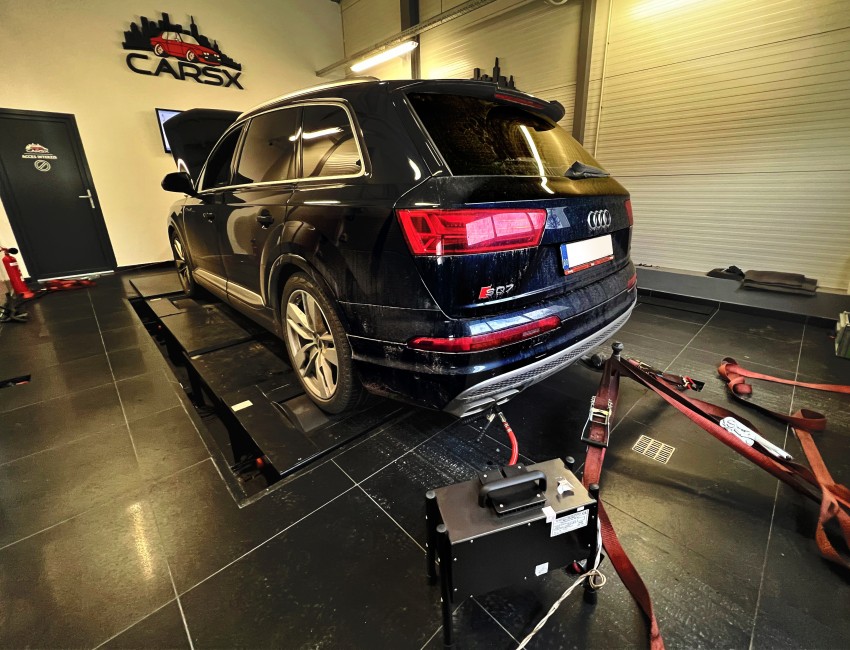
Announcement
01.02.2023
INFORMATION!
At the commendable initiative of the colleagues from Completechip Iasi, we decided to join the group of those who provide software services, based on DYNAMIC TESTS OF MAXIMUM OPACITY before and after the re-software of diesel engines, with the aim of both the actual inclusion of cars in the pollution norm as well as to improve and confirm the quality of the software services offered. *These measurements are NOT official, being used exclusively for those previously mentioned.
Thus, starting on February 1, 2023, ALL DIESEL cars that pass our threshold for software services will be subjected to dynamic opacity tests. For these tests we will use our 4x4 dyno stand, assisted by an approved and up-to-date metrology gas opacimeter.
According to the legislation in force (RNTR1), we must remember the following aspects:
The maximum allowed opacity should be written on a plate generated by the manufacturer, located in the equipment of the respective car and which refers to the maximum emissions in DYNAMIC conditions. Where the plate is non-existent, the limit values for opacity according to the pollution class are:
Euro 3 -> Non Euro: Opacity max 3
Euro 4: Opacity max 1.5
Euro 5: Opacity max 1.5
Euro 6: Opacity max 0.7
The national rules for checking opacity ONLY refer to STATIC testing, but, following the tests done so far, we have come to the conclusion that this testing is not very relevant, being most of the times totally different from the results obtained in the LOAD tests .
With this implementation, we must inform you that we want to change the "target" post resoft, from "maximum power obtained in safe conditions" to "maximum power obtained in safe conditions, BUT with minimum opacity", depending on the state hardware of each individual machine. In general, cars whose antipollution systems are "healthy", the measurement results are perfectly within the limits of the "builder plate", and in Euro 5 and Euro 6 cars, most of the time, the measurements have ZERO values (0.0) .
Things get complicated for cars whose anti-pollution systems are disabled or faulty. The cars in this case, do NOT fit from the start (even stock) in the rules mentioned by the manufacturer, and the hardware defects make it even more difficult to achieve the goal of "minimum opacity". There are cases when the final result must be "sacrificed", but for a more concrete example, we will come back along the way with various individual cases of "good" or "less good" cars, presented through video materials.
It should be noted that the machines whose opacity results, in the stock (original) version, will have a significant deviation from the legal limits, will be considered DEFECTIVE and implicitly will NOT be subject to software changes until the hardware problems are fixed.
WE WILL BE BACK SOON!!!
At the commendable initiative of the colleagues from Completechip Iasi, we decided to join the group of those who provide software services, based on DYNAMIC TESTS OF MAXIMUM OPACITY before and after the re-software of diesel engines, with the aim of both the actual inclusion of cars in the pollution norm as well as to improve and confirm the quality of the software services offered. *These measurements are NOT official, being used exclusively for those previously mentioned.
Thus, starting on February 1, 2023, ALL DIESEL cars that pass our threshold for software services will be subjected to dynamic opacity tests. For these tests we will use our 4x4 dyno stand, assisted by an approved and up-to-date metrology gas opacimeter.
According to the legislation in force (RNTR1), we must remember the following aspects:
The maximum allowed opacity should be written on a plate generated by the manufacturer, located in the equipment of the respective car and which refers to the maximum emissions in DYNAMIC conditions. Where the plate is non-existent, the limit values for opacity according to the pollution class are:
Euro 3 -> Non Euro: Opacity max 3
Euro 4: Opacity max 1.5
Euro 5: Opacity max 1.5
Euro 6: Opacity max 0.7
The national rules for checking opacity ONLY refer to STATIC testing, but, following the tests done so far, we have come to the conclusion that this testing is not very relevant, being most of the times totally different from the results obtained in the LOAD tests .
With this implementation, we must inform you that we want to change the "target" post resoft, from "maximum power obtained in safe conditions" to "maximum power obtained in safe conditions, BUT with minimum opacity", depending on the state hardware of each individual machine. In general, cars whose antipollution systems are "healthy", the measurement results are perfectly within the limits of the "builder plate", and in Euro 5 and Euro 6 cars, most of the time, the measurements have ZERO values (0.0) .
Things get complicated for cars whose anti-pollution systems are disabled or faulty. The cars in this case, do NOT fit from the start (even stock) in the rules mentioned by the manufacturer, and the hardware defects make it even more difficult to achieve the goal of "minimum opacity". There are cases when the final result must be "sacrificed", but for a more concrete example, we will come back along the way with various individual cases of "good" or "less good" cars, presented through video materials.
It should be noted that the machines whose opacity results, in the stock (original) version, will have a significant deviation from the legal limits, will be considered DEFECTIVE and implicitly will NOT be subject to software changes until the hardware problems are fixed.
WE WILL BE BACK SOON!!!